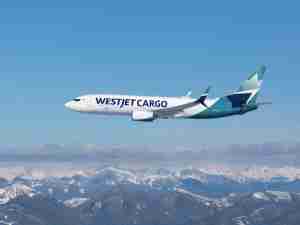John F. Kennedy International Airport is seeking funds to help it build its New Terminal One, making it the latest facility to tap investors amid an airport bond boom.
Next week, the group behind the public-private partnership running the project will offer debt to refinance part of the $6.6 billion bank loan taken out in 2022 for the development. In November, $1.5 billion in bonds were offered to start taking down the facility, and upsized the deal to $2 billion to meet demand. When that debt trades, which isn’t often, it does so at premium prices.
The New York hub joins facilities from coast to coast that are raising money to pay for much-needed repairs. US airports need $151 billion in infrastructure upgrades through 2027, according to Airports Council International-North America. The deal adds to a muni supply wave that’s jumped by more than a third over last year’s pace to $205 billion.

Moody’s Ratings and Fitch Ratings have assigned the deal a grade just one level above junk status, though the demand prospects for air travel mitigate some concerns about costs and complexity.
“With barely an investment grade rating at BBB- this shows the upfront risk and debt involved in these massive terminal projects,” said Byron Anderson, head of fixed income at Laffer Tengler Investments, in an email. “The good news is that JFK is one of the busiest airports in the US and demand should stay high.”
JFK has called the $9 billion first phase of the New Terminal One project “the largest single-asset project financing in US history.” It’s expected to be completed by June of 2026, and will add four gates to the current 10 along with a new, arrivals and departures building, according to the bond offering documents. The whole terminal is due to be completed in 2030 and will have 23 gates and a total footprint of 2.6 million square feet.
The upcoming issue comes after Fed watchers have already postponed their call for the first rate cut. Policy makers in March had signaled three quarter-point cuts in 2024, but this week they’re expected to scale back that forecast in the face of a barrage of robust economic data, including strong May jobs growth.
For muni borrowers, a shift in interest rates as a result of the Fed meeting is overshadowed by the urge to tap strong demand for the debt, alongside a push to get ahead of potential volatility from November’s presidential election.
“Issuers have shown a willingness to tap the muni markets en masse,” said Eric Kazatsky, analyst at Bloomberg Intelligence. “Demand will help take the sting” from any increase in borrowing costs.
International Travel
One concern of airport bond buyers is the level of international enplanements — revenue-generating passengers departing from or arriving at JFK. The new terminal will be solely devoted to international travel.
International enplanements have yet to return to pre-Covid numbers. They were 16.7 million last year, compared to 17.2 million in 2019, according to the report by airport consultant Steer Davies & Gleave Inc. contained in the bond offering documents. The report attributed much of the decline to the late post-pandemic opening of the trans-Pacific market.
However, in rating these bonds Baa3, Moody’s stated “we expect enplanements will fully recover by opening of Phase A.”
Tom Kozlik, head of public policy and municipal strategy at Hilltop Securities Inc., said he was “very bullish” on the airport sector, partly because of the push to upgrade facilities.
“US airports are generally upgrading their infrastructure because they’re experiencing and are expecting to continue to experience increased enplanements and usage,” Kozlik said. “Travel in the US is changing, and that will generally result in higher enplanements.”
New Terminal One is the result of a partnership between the state, the Port Authority of New York and New Jersey, and Ferrovial SA, Carlyle Group Inc., JLC Infrastructure and the Union Labor Life Insurance Co.










